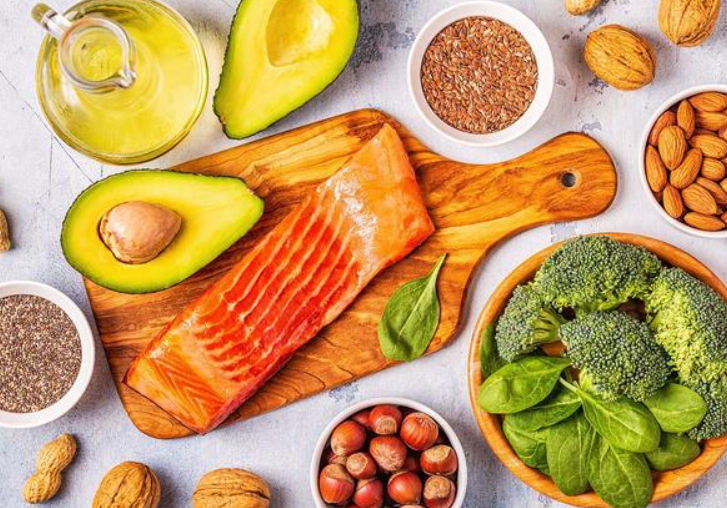
The taste of food can always comfort our hearts: from the sweet of candy to the sour of lemon, from the fresh sweet of seafood to the bitter of coffee, each taste has its own unique charm and value. These ever-changing flavors are actually a combination of several basic flavors.
At first, people thought that there were only four basic tastes: sour, sweet, bitter and salty. In the early 20th century, Japanese scientist Kikumae Ikeda proposed that umami was also a basic taste.
How do we taste?
The process of tasting flavors involves two sensory systems: taste and smell. When you eat, the chemicals in the food that can transmit the taste are dissolved in the saliva and then converted into taste signals in contact with the taste buds on the tongue. The signals are transmitted to the cerebral cortex through nerves, and the brain interprets and combines these nerve signals to finally produce various tastes such as sweet, salty, sour and bitter.
At the same time, during chewing, food odors enter the olfactory system from the back nasal cavity. There are about 1,000 different kinds of olfactory receptors in the nasal mucosa, and when odor molecules enter the nasal cavity and bind to the receptors, they generate nerve signals, which are transmitted to the cerebral cortex, and are combined by the brain into a specific pattern and stored, resulting in smell.
The messenger of various tastes
Taste is mainly produced by the delivery of specific chemicals to the taste buds and nasal mucosa, and these chemicals are like messengers, with a mission to convey the "identity" of food and increase the happiness of eating. So who are the messengers responsible for the basic tastes?
In chemistry, substances with a ph value less than 7 are acidic substances, such as dilute hydrochloric acid, concentrated sulfuric acid and other well-known inorganic acids (note! They are inedible! .
The sour taste in food is produced by a small amount of organic acids contained in food, such as lactic acid, citric acid and acetic acid, etc., they release hydrogen ions after dissociation in water, stimulate the acid receptors on the tongue, and go through a series of signal transduction processing, and finally produce the feeling of acid.
Second is sweetness. Sweet food is always irresistible, the source of the sweet taste is small molecules of sugar, such as glucose, fructose and so on.
Moreover, salivary amylase in saliva can convert some large molecules of sugar into glucose, so we can also feel sweetness when we taste starchy foods such as rice and steamed bread.
The messengers of bitterness are all inclusive, usually alkaloids or special compounds in certain drugs and plants. These substances activate bitter taste receptors on the tongue, making people feel bitter. While bitterness may not be all that pleasant, in some foods, the right amount of bitterness can give a unique taste.
Saltiness is caused by salts such as sodium chloride (table salt). Salt is soluble in water, and when it dissolves, it releases sodium ions that stimulate saltiness receptors, producing the salty sensation.
Salt also provides the body with an important element of sodium, which is an important element for maintaining body homeostasis, and the nerve signals we have been referring to are formed by sodium ions and potassium ions in and out of nerve cells.
Umami, also known as meaty or sweet, is a unique taste that is produced by amino acids (such as glutamate) or nucleotides (such as inosine and guanylate). These substances can activate umami receptors on the tongue, bringing the feeling of freshness. The main ingredient in MSG is sodium glutamate is a typical umami agent, it is the sodium salt of glutamate, after dissolution will produce glutamate, let us enjoy more delicious taste.
The sixth basic taste
After introducing so much knowledge, we can finally uncover the mystery of the sixth flavor - it is "ammonium chloride". Scientists have found that the presence of a proton channel on the tongue called OTOP1, which can recognize changes in acidity within cells and release signals representing sour taste, because ammonium chloride affects acid levels in cells, it can also activate the OTOP1 receptor to produce nerve signals that allow the cerebral cortex to "taste" it, proving that "ammonium chloride taste" is also a taste.There may be receptors or transmission mechanisms that we haven't yet discovered, and the taste we end up tasting is not sour and unlike any of the basic tastes we've discovered before, but we can already tell that the taste of ammonium chloride is something completely new.
However, ammonium chloride is not common in the daily diet, and it does not sound like the taste we like, and it is. The taste of ammonium chloride is a mix of salty, bitter, sour pungent taste, and even some people can taste spicy or cool feeling.
So why can humans taste such a strange taste? In fact, ammonium salts and one of their decomposition products, the gas ammonia, are often toxic to organisms, and many organisms in nature can sense and react to ammonium and ammonia in the environment, and many substances containing chlorine are also harmful to humans. Therefore, tasting ammonium chloride may be a function of avoiding toxic substances.
Exploring the mysteries of taste is like a never-ending culinary journey. With the continuous progress of science, people's understanding of food taste is also undergoing innovation again and again.
From the original five basic flavors to the current six, each newly discovered flavor is an expansion of the sensory world and a redefinition of food diversity. The world of food is like a never-ending book, with every page filled with new knowledge, new experiences, and new pleasures. It teaches us to respect nature, appreciate diversity, and inspires people's curiosity and creativity.

